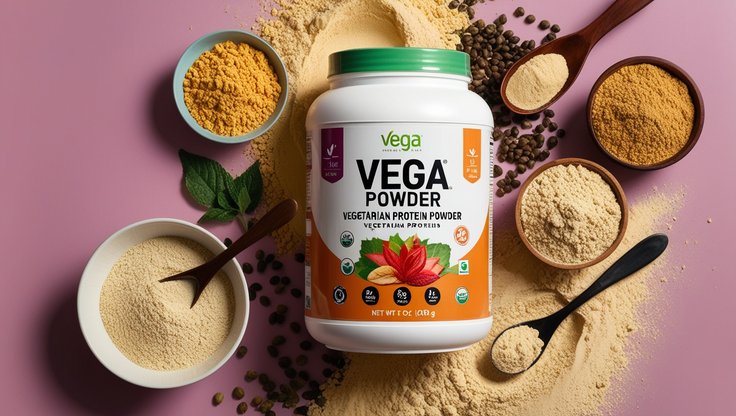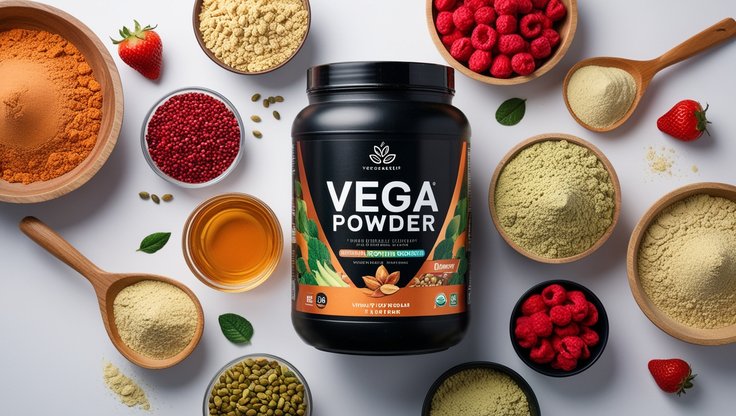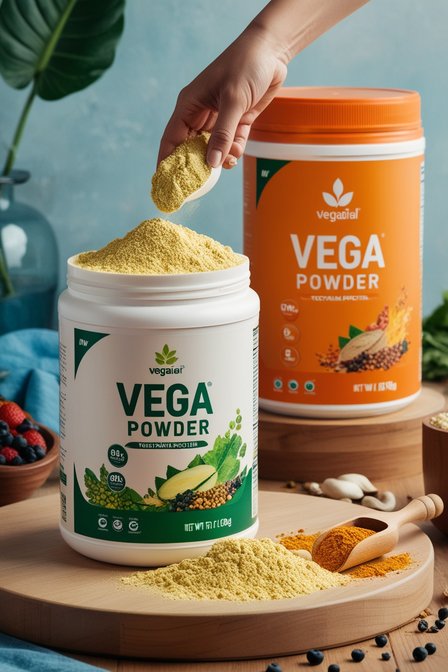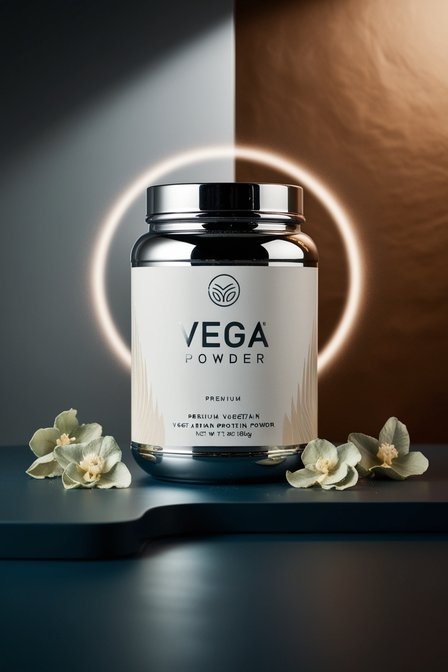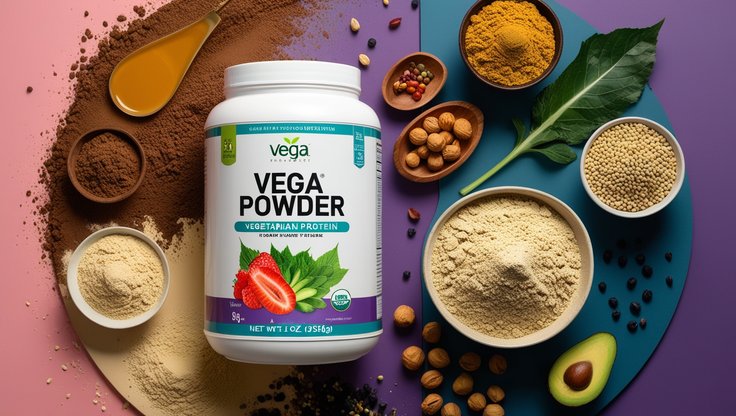Understanding Vegan Protein Sources: A Comprehensive Guide
When it comes to maintaining a balanced and healthful vegan diet, one crucial element to consider is protein. Essential for muscle repair, enzyme production, and overall bodily functions, protein must be a key component of any diet. For those following a vegan lifestyle, selecting appropriate sources of protein can sometimes pose a challenge. This guide delves into various vegan protein sources, offering an extensive overview of their benefits, nutrient profiles, and practical ways to incorporate them into your daily meals.
The Importance of Protein in a Vegan Diet
Protein is a macronutrient that is vital for a range of bodily functions. It helps build and repair tissues, produce enzymes and hormones, and supports immune system health. In the context of a vegan diet, ensuring adequate protein intake involves understanding plant-based sources that can provide the necessary amino acids.
Unlike animal proteins, which are complete proteins containing all essential amino acids, many plant proteins are incomplete. This means they may lack one or more of the essential amino acids. However, by combining various plant-based foods, vegans can easily obtain all the necessary amino acids.
Popular Vegan Protein Sources
A diverse range of plant-based foods can serve as excellent protein sources. Whole grains, legumes, nuts, seeds, and soy products are at the forefront of these sources. Each category offers unique benefits and contributes different nutrients that are beneficial to overall health.
Legumes: Beans, Lentils, and Peas
Legumes, including beans, lentils, and peas, are among the most robust sources of plant-based protein. For instance, chickpeas and black beans provide around 15 grams of protein per cup when cooked. Lentils are particularly noteworthy, offering about 18 grams of protein per cooked cup. Peas, another valuable member of this group, contribute around 9 grams of protein per cup.
In addition to their protein content, legumes are rich in fiber, vitamins, and minerals. They support digestive health, help in maintaining stable blood sugar levels, and provide essential nutrients like iron and folate.
Soy Products: Tofu, Tempeh, and Edamame
Soy products are renowned for their high protein content and versatility. Tofu, made from soybeans, is a popular choice, with a half-cup serving typically containing around 10 grams of protein. Tempeh, another soy-based product, provides even more protein, offering about 15 grams per half-cup serving. Edamame, young soybeans, contain approximately 8 grams of protein per half-cup.
These soy products not only offer substantial protein but also deliver a range of essential nutrients, including calcium, magnesium, and B vitamins. They can be used in various dishes, from stir-fries to salads, making them a versatile addition to a vegan diet.
Nuts and Seeds: Almonds, Chia Seeds, and Hemp Seeds
Nuts and seeds are excellent sources of protein and healthy fats. Almonds, for example, contain about 6 grams of protein per ounce. Chia seeds and hemp seeds are particularly rich in protein, with chia seeds offering around 4 grams per ounce and hemp seeds approximately 10 grams per ounce.
In addition to protein, nuts and seeds provide beneficial fatty acids, fiber, and antioxidants. They can be incorporated into smoothies, yogurt, or used as a topping for salads and oatmeal.
Whole Grains: Quinoa, Buckwheat, and Farro
Whole grains are another essential source of protein for vegans. Quinoa stands out as a complete protein, providing all nine essential amino acids. A cup of cooked quinoa contains about 8 grams of protein. Buckwheat and farro are also valuable sources, offering approximately 6 grams and 7 grams of protein per cup, respectively.
These grains are not only rich in protein but also high in fiber, vitamins, and minerals. They can be used in a variety of dishes, from grain bowls to soups, adding both texture and nutritional value.
The Role of Protein-Rich Vegetables
Certain vegetables also contribute to protein intake, although they generally provide smaller amounts compared to legumes, nuts, seeds, and grains. Vegetables like spinach, kale, and broccoli contain moderate levels of protein and are also rich in vitamins and minerals. For instance, a cup of cooked spinach offers about 5 grams of protein, while broccoli provides around 4 grams per cup.
While vegetables alone may not meet all protein needs, they complement other protein sources and contribute valuable nutrients to a vegan diet.
Combining Proteins for Optimal Nutrition
To ensure a complete amino acid profile, it is beneficial for vegans to combine different protein sources. For example, pairing beans with rice or combining hummus with whole-grain bread can provide a balanced amino acid profile. This approach, known as complementary protein pairing, helps ensure that all essential amino acids are consumed throughout the day.
Protein Needs for Different Life Stages
Protein needs can vary based on age, activity level, and specific health conditions. For most adults, the Recommended Dietary Allowance (RDA) for protein is approximately 0.8 grams per kilogram of body weight. Active individuals, athletes, and those with higher protein needs may require more. Children, pregnant women, and older adults also have varying protein requirements, which should be considered when planning meals.
Practical Tips for Increasing Protein Intake
Incorporating a variety of protein sources into your diet can help meet your nutritional needs. Meal planning and preparation are key. Prepare meals in advance, ensuring that each meal includes a source of protein. Snack on protein-rich foods like nuts, seeds, or edamame to boost your intake throughout the day.
Experiment with new recipes and cooking techniques to keep meals interesting and nutritionally balanced. Utilizing protein powders derived from pea, hemp, or rice protein can also be a convenient option to supplement protein intake, particularly for those with higher needs or busy schedules.
Addressing Common Concerns
One common concern among those new to a vegan diet is the potential for protein deficiency. However, with careful planning and a varied diet, meeting protein needs is entirely achievable. Monitoring protein intake and making sure to include a range of protein-rich foods will help prevent deficiencies and support overall health.
Additionally, some individuals may worry about the bioavailability of plant-based proteins compared to animal sources. While plant-based proteins might have lower digestibility, combining different protein sources can enhance overall absorption and utilization.
Conclusion
Understanding and incorporating diverse vegan protein sources into your diet is essential for maintaining optimal health and meeting your nutritional needs. By focusing on legumes, soy products, nuts and seeds, whole grains, and vegetables, and combining different sources, you can ensure a well-rounded and balanced intake of protein. With thoughtful planning and creativity in the kitchen, a vegan diet can provide all the necessary nutrients for a healthy and active lifestyle.
When it comes to maintaining a balanced and healthful vegan diet, one crucial element to consider is protein. Essential for muscle repair, enzyme production, and overall bodily functions, protein must be a key component of any diet. For those following a vegan lifestyle, selecting appropriate sources of protein can sometimes pose a challenge. This guide delves into various vegan protein sources, offering an extensive overview of their benefits, nutrient profiles, and practical ways to incorporate them into your daily meals.
The Importance of Protein in a Vegan Diet
Protein is a macronutrient that is vital for a range of bodily functions. It helps build and repair tissues, produce enzymes and hormones, and supports immune system health. In the context of a vegan diet, ensuring adequate protein intake involves understanding plant-based sources that can provide the necessary amino acids.
Unlike animal proteins, which are complete proteins containing all essential amino acids, many plant proteins are incomplete. This means they may lack one or more of the essential amino acids. However, by combining various plant-based foods, vegans can easily obtain all the necessary amino acids.
Popular Vegan Protein Sources
A diverse range of plant-based foods can serve as excellent protein sources. Whole grains, legumes, nuts, seeds, and soy products are at the forefront of these sources. Each category offers unique benefits and contributes different nutrients that are beneficial to overall health.
Legumes: Beans, Lentils, and Peas
Legumes, including beans, lentils, and peas, are among the most robust sources of plant-based protein. For instance, chickpeas and black beans provide around 15 grams of protein per cup when cooked. Lentils are particularly noteworthy, offering about 18 grams of protein per cooked cup. Peas, another valuable member of this group, contribute around 9 grams of protein per cup.
In addition to their protein content, legumes are rich in fiber, vitamins, and minerals. They support digestive health, help in maintaining stable blood sugar levels, and provide essential nutrients like iron and folate.
Soy Products: Tofu, Tempeh, and Edamame
Soy products are renowned for their high protein content and versatility. Tofu, made from soybeans, is a popular choice, with a half-cup serving typically containing around 10 grams of protein. Tempeh, another soy-based product, provides even more protein, offering about 15 grams per half-cup serving. Edamame, young soybeans, contain approximately 8 grams of protein per half-cup.
These soy products not only offer substantial protein but also deliver a range of essential nutrients, including calcium, magnesium, and B vitamins. They can be used in various dishes, from stir-fries to salads, making them a versatile addition to a vegan diet.
Nuts and Seeds: Almonds, Chia Seeds, and Hemp Seeds
Nuts and seeds are excellent sources of protein and healthy fats. Almonds, for example, contain about 6 grams of protein per ounce. Chia seeds and hemp seeds are particularly rich in protein, with chia seeds offering around 4 grams per ounce and hemp seeds approximately 10 grams per ounce.
In addition to protein, nuts and seeds provide beneficial fatty acids, fiber, and antioxidants. They can be incorporated into smoothies, yogurt, or used as a topping for salads and oatmeal.
Whole Grains: Quinoa, Buckwheat, and Farro
Whole grains are another essential source of protein for vegans. Quinoa stands out as a complete protein, providing all nine essential amino acids. A cup of cooked quinoa contains about 8 grams of protein. Buckwheat and farro are also valuable sources, offering approximately 6 grams and 7 grams of protein per cup, respectively.
These grains are not only rich in protein but also high in fiber, vitamins, and minerals. They can be used in a variety of dishes, from grain bowls to soups, adding both texture and nutritional value.
The Role of Protein-Rich Vegetables
Certain vegetables also contribute to protein intake, although they generally provide smaller amounts compared to legumes, nuts, seeds, and grains. Vegetables like spinach, kale, and broccoli contain moderate levels of protein and are also rich in vitamins and minerals. For instance, a cup of cooked spinach offers about 5 grams of protein, while broccoli provides around 4 grams per cup.
While vegetables alone may not meet all protein needs, they complement other protein sources and contribute valuable nutrients to a vegan diet.
Combining Proteins for Optimal Nutrition
To ensure a complete amino acid profile, it is beneficial for vegans to combine different protein sources. For example, pairing beans with rice or combining hummus with whole-grain bread can provide a balanced amino acid profile. This approach, known as complementary protein pairing, helps ensure that all essential amino acids are consumed throughout the day.
Protein Needs for Different Life Stages
Protein needs can vary based on age, activity level, and specific health conditions. For most adults, the Recommended Dietary Allowance (RDA) for protein is approximately 0.8 grams per kilogram of body weight. Active individuals, athletes, and those with higher protein needs may require more. Children, pregnant women, and older adults also have varying protein requirements, which should be considered when planning meals.
Practical Tips for Increasing Protein Intake
Incorporating a variety of protein sources into your diet can help meet your nutritional needs. Meal planning and preparation are key. Prepare meals in advance, ensuring that each meal includes a source of protein. Snack on protein-rich foods like nuts, seeds, or edamame to boost your intake throughout the day.
Experiment with new recipes and cooking techniques to keep meals interesting and nutritionally balanced. Utilizing protein powders derived from pea, hemp, or rice protein can also be a convenient option to supplement protein intake, particularly for those with higher needs or busy schedules.
Addressing Common Concerns
One common concern among those new to a vegan diet is the potential for protein deficiency. However, with careful planning and a varied diet, meeting protein needs is entirely achievable. Monitoring protein intake and making sure to include a range of protein-rich foods will help prevent deficiencies and support overall health.
Additionally, some individuals may worry about the bioavailability of plant-based proteins compared to animal sources. While plant-based proteins might have lower digestibility, combining different protein sources can enhance overall absorption and utilization.
Conclusion
Understanding and incorporating diverse vegan protein sources into your diet is essential for maintaining optimal health and meeting your nutritional needs. By focusing on legumes, soy products, nuts and seeds, whole grains, and vegetables, and combining different sources, you can ensure a well-rounded and balanced intake of protein. With thoughtful planning and creativity in the kitchen, a vegan diet can provide all the necessary nutrients for a healthy and active lifestyle.
